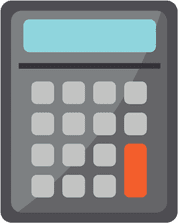It’s no secret that the demand for apartments in the USA, from both the consumer and investor perspective, is growing. It’s one of the reasons that I am so passionate about investing in the multifamily space. But have you ever wondered why the demand is so high and why it continues to grow?
It’s a great question and there's a variety of factors that point to the strong demand for apartments. Let’s explore them now.
Watch the video below (or keep reading).
#1: The Housing Market
Housing prices are continually going up. Over the last year, the monthly median-priced home mortgage increased $175 last year — up to $1,700 per month.
That increase is widening the gap between owning and renting, which drives rental demand.
#2: The Millennial Mindset
Young adults are really driving rental demands these days, and this large group of consumers prefer renting to home ownership for a variety of reasons.
Some don't have the down payment to buy a home. (Again, here we see the effects of a widening gap between owning a home and renting.)
Others saw what happened to their parents in 2008 and may have even lost their house, or watched their friends lose their homes. This experience makes them cautious about buying because they don’t want to end up in the same situation.
Finally, young people today simply want more freedom. It’s not necessarily about having less responsibility. They want more freedom to do as they please, and household chores like taking care of a yard takes away some of that freedom.
#3: Vacancy Rates
The type of buildings that we invest in, Class B and Class C, are affordable housing. This past year, the vacancy rate for these classes was at the lowest point in 19 years!
This is driving the demand to build more apartment buildings to accommodate the growing number of renters. Which brings us to the next reason this space is so competitive…
#4: Construction Costs
Let’s consider Class C, which has a 3.9% vacancy rate. One reason for this low vacancy rate is due to the fact that you can’t build affordable housing anymore. The cost of construction to build a new multifamily complex is going to cost upwards of $120,000 per unit.
Typically, we buy properties for much less than that. Sometimes even as low as $40,000 a unit or $50,000 – $60,000 a unit. In other words, you can't build more affordable housing than that.
The demographic of people looking for affordable housing is always there, and growing, but it’s too costly to build. So when someone puts up a new apartment building, it doesn't really affect us as investors very much.
This combination of these factors keeps demand really, really strong, which is reflective in the vacancy rates last year and the competitive nature of apartment deal flow that you see today.
Shifting Demographic Demands
A nonprofit called WeAreApartments.org is projecting that the USA is going to need 4.6 million more apartment units by the year 2030. There’s a shift in demographics that’s happening to drive this demand.
We already touched on the impact that young adults are having on the housing market with their preference to rent versus buying. This is definitely driving demand from a growth perspective. But what about the older generations?
If you look to where the general population is moving, it’s definitely moving from colder climates to warmer climates. This trend is largely driven by the Baby Boomers. I personally know at least three couples who are relocating, or already have relocated to Florida or North Carolina and South Carolina. It’s just better for them there because with better weather, there is more they can do.
So, when we are investing, we tend to invest in those warmer climates more so than the colder climates due to this shift in demographic demand.
Analyzing Submarkets
As an investor, you always want to think about demographic and geographic demands. I am always concerned about what’s going to happen in a recession or a market correction.
It’s important that I understand these trends because not all real estate is created equal.
There is a market cycle for residential housing, a market cycle for office, a market cycle for multifamily. If you understand the demographics and the drivers for each asset class, you will make better investment decisions.
So when there’s a story on CNN about some kind of real estate crisis, the sophisticated, educated investor will ask questions like:
- What kind of real estate is it?
- What is asset class?
- Within the asset class, where is the market?
Even within a city, the submarket is very important. There are submarkets that are less desirable and shrinking, and others that are very desirable and growing. As you’re evaluating opportunities, you want to start at a macro level and then get down into the micro details.
On a macro level, you have to ask yourself:
- What are the drivers to that city?
- What’s the job projections?
- What does that submarket?
The educated investor looks at all trends to make better decisions. The key takeaway is to make sure you analyze an opportunity from a top level down. Ask questions down to the submarket level, in addition to valuing the property itself.
Keep this in mind:
Even if someone were to make a mistake about the property itself by overestimating the rents, for example, a rising tide lifts all boats. If the submarket is good enough, it will fix and eradicate those problems over time.
And If there are no problems, it will just amplify the business plan.
Helpful Resources
A lot of the stuff I’m talking about here you can find in the Marcus and Millichap free report called 2019 Multifamily North American Investment Forecast. This report is super informative both for passive investors as well as active investors.
